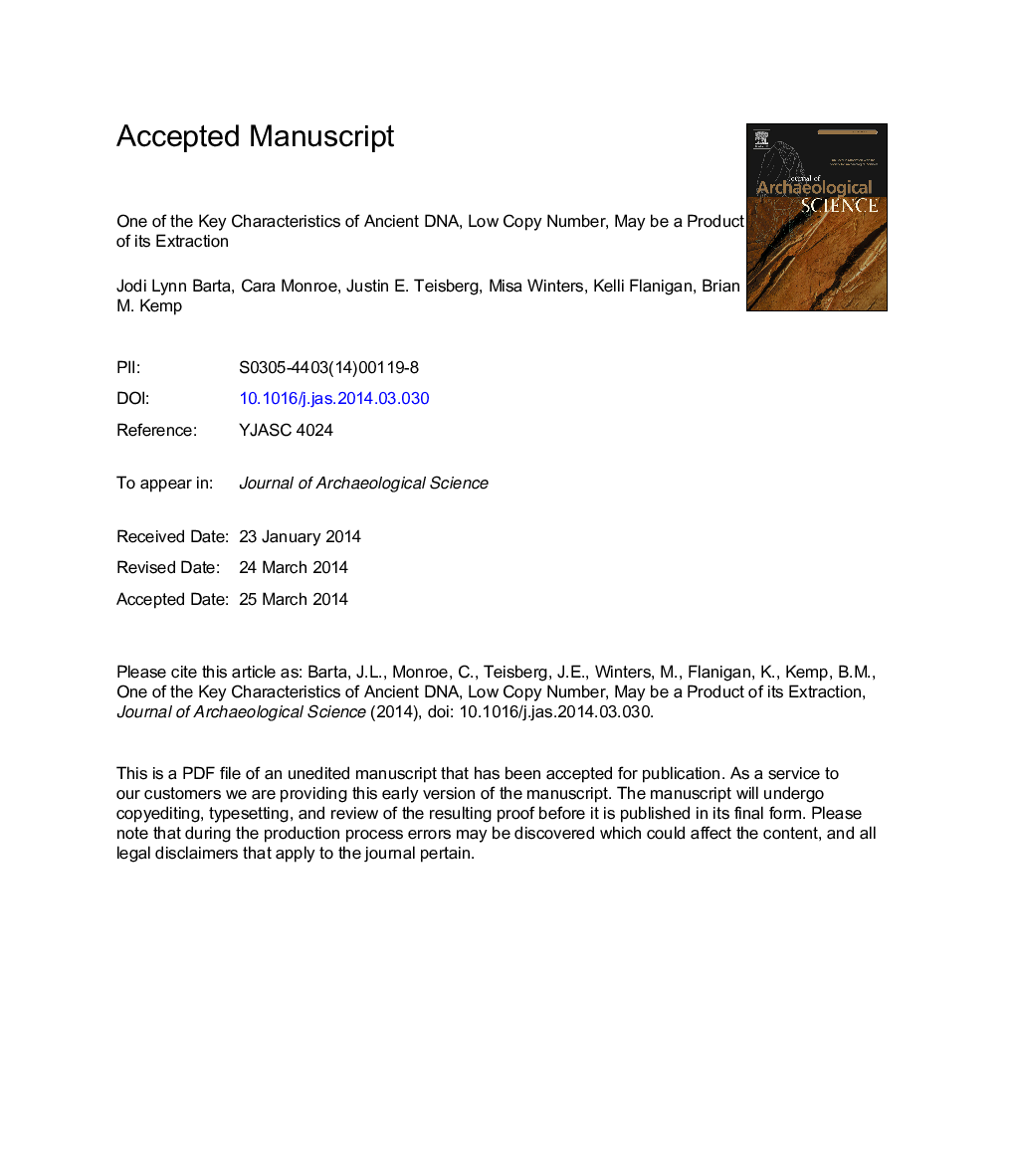| Article ID | Journal | Published Year | Pages | File Type |
|---|---|---|---|---|
| 7443505 | Journal of Archaeological Science | 2014 | 44 Pages |
Abstract
DNA from ancient sources is generally believed to be of low copy number, despite minimal attention towards direct measurement of DNA loss accumulated through the extraction process. We developed synthesized “standards” to measure the efficiency of some common DNA extraction methods for degraded skeletal samples, and used quantitative PCR to estimate a known quantity of DNA subjected to a given extraction method (i.e. “copies in”) versus quantity of DNA retained (i.e. “copies out”). All methods performed poorly in retaining short segments of DNA, giving low copy number results even when pre-extraction copy numbers exceeded those expected of ancient samples. These findings challenge low copy number expectations, suggesting that ancient specimens may contain far more preserved genetic material than previously recognized. Furthermore, they emphasize the importance of optimizing and/or developing specialized extraction methods for retrieving degraded DNA.
Related Topics
Physical Sciences and Engineering
Materials Science
Materials Science (General)
Authors
Jodi Lynn Barta, Cara Monroe, Justin E. Teisberg, Misa Winters, Kelli Flanigan, Brian M. Kemp,
